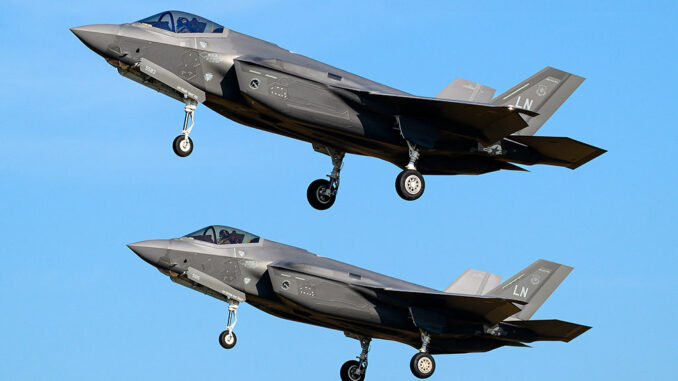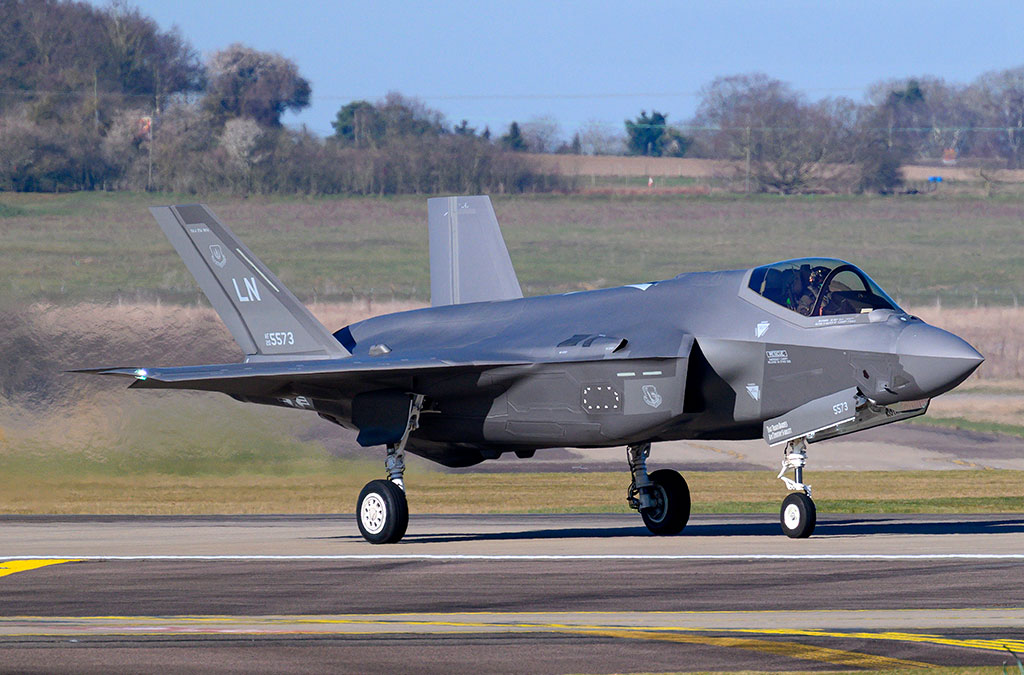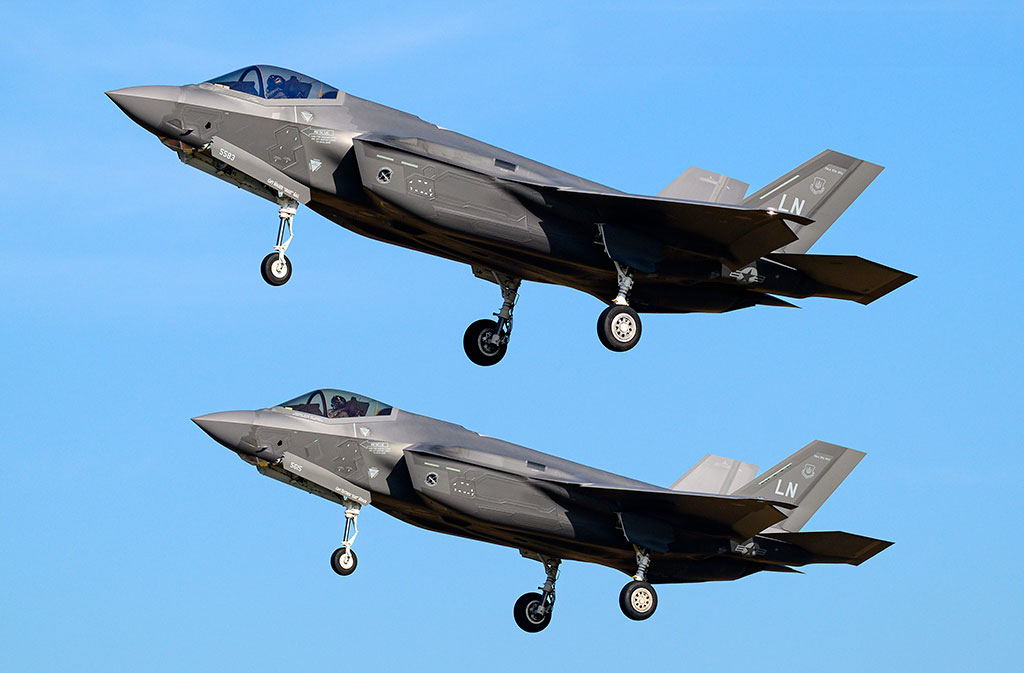
Analysis of the technical and strategic challenges of India’s acquisition of the F-35: costs, integration, technological dependence, and geopolitical impact.
Faced with the need to modernize its military aviation, India is considering the acquisition of the F-35 Lightning II fighter jet, a fifth-generation stealth fighter designed by Lockheed Martin. This decision, motivated by China’s rise with its Chengdu J-20 and regional tensions with Pakistan, raises complex questions.
While the F-35 offers advanced capabilities in terms of stealth, data fusion, and versatility, its integration into the Indian Air Force (IAF) poses major technical and strategic challenges. High costs, dependence on US technology, the impact on indigenous programs such as the Advanced Medium Combat Aircraft (AMCA), and geopolitical tensions with Russia, a long-standing partner, complicate the picture. This article analyzes these issues in detail, drawing on accurate data to shed light on the implications of such an acquisition for India.

The technical challenges of integrating the F-35 into the Indian Air Force
The integration of the F-35 fighter jet into the IAF poses significant technical challenges, linked to its technological complexity and the specificities of the Indian context. The F-35, with its 8.6 million lines of code and advanced data fusion system, relies on sophisticated infrastructure. Its sensors, such as the APG-81 active electronically scanned array radar, and its electronic warfare system require operational bases equipped with state-of-the-art maintenance systems. However, the IAF, which is mainly equipped with Sukhoi Su-30 MKIs and HAL Tejas, uses infrastructure adapted to Russian and Indian aircraft, which are often less demanding in terms of digital logistics.
The cost of adapting Indian air bases is estimated at several hundred million euros, including air-conditioned hangars and specific diagnostic systems. The maintenance of the F-35, with an hourly flight cost of €39,000 (compared to €16,500 for the Rafale), represents a financial burden. In addition, the IAF would have to train its pilots and technicians to US standards, a long and costly process estimated at €10 million per squadron for initial training. The integration of Indian weapons, such as the BrahMos missile, is problematic because Lockheed Martin restricts access to source codes, limiting modifications.
Another challenge concerns compatibility with existing systems. The F-35 uses the Multifunction Advanced Data Link (MADL), which is incompatible with the IAF’s Russian networks. Interoperability would require additional investment in communication gateways, which are potentially vulnerable to cyberattacks. Finally, the reliability of the F-35 in Indian climatic conditions, characterized by extreme temperatures and monsoons, remains uncertain, as the aircraft was designed for temperate environments.
Strategic implications for Indian sovereignty
India’s acquisition of the F-35 fighter jet raises profound strategic issues, particularly in terms of sovereignty and technological autonomy. India is pursuing the “Make in India” initiative to reduce its dependence on military imports. However, the F-35, produced exclusively by Lockheed Martin, offers limited technology transfer. US restrictions on source codes and critical components, such as the Pratt & Whitney F135 engine, prevent India from developing local expertise. This contrasts with programs such as the Rafale, where Dassault Aviation has agreed to industrial partnerships with Hindustan Aeronautics Limited (HAL).
The development of the AMCA, an Indian fifth-generation stealth fighter scheduled for 2034, could be threatened. The AMCA budget, estimated at €6 billion for R&D, is likely to be diverted to the purchase and maintenance of the F-35, which costs €80 million per unit for the F-35A variant. A fleet of 114 aircraft, envisaged as part of the Multi-Role Fighter Aircraft (MRFA) program, would represent an initial investment of €9.1 billion, not including operating costs over 30 years, estimated at €25 billion.
Dependence on the US also poses a geopolitical risk. India, which operates Russian systems such as the S-400 Triumph, could see its relations with Moscow deteriorate. Turkey, which was excluded from the F-35 program in 2019 for acquiring the S-400, illustrates this precedent. Too close an alignment with Washington could limit New Delhi’s strategic freedom, particularly in regional conflicts where US and Indian interests diverge.
Geopolitical tensions and regional balance
India’s potential acquisition of the F-35 is reshaping the geopolitical balance in South Asia. China, with its J-20 and J-35A stealth fighters, represents a growing threat. The F-35, with its 2,200 km range and advanced detection capabilities, would enable the IAF to counter this threat by providing information superiority. However, this acquisition could exacerbate tensions with Beijing, which could accelerate the deployment of its own sixth-generation fighters, such as the J-36.
Pakistan, equipped with JF-17 Thunder and potentially Chinese J-35s, would perceive the arrival of the F-35 as a provocation. This could trigger an arms race, with Islamabad seeking to acquire Russian Sukhoi Su-57s or Turkish TAI TFXs. The cost of this escalation, estimated at several billion euros for both countries, would undermine regional stability.
Internationally, India has to juggle its relations with the US and Russia. An F-35 contract would strengthen ties with Washington, but at the cost of increased mistrust from Moscow, which supplies 60% of India’s military equipment. Negotiations for the Su-57, offered by Rosoboronexport, could be compromised. In addition, integrating the F-35 into the IAF would require data-sharing agreements with the US, which could conflict with India’s digital sovereignty.

Alternatives and strategic choices for India
Faced with the challenges of the F-35, India has alternatives for modernizing its combat aviation. The Rafale, already in service with 36 aircraft, offers proven versatility and relative independence from the US. A contract for 114 additional Rafales, estimated at €10.3 billion, would include local production by HAL, in line with “Make in India.” The F-21, a modernized version of the F-16 offered by Lockheed Martin, represents an intermediate solution. With a unit cost of €70 million and 60% local production, it would meet the IAF’s urgent needs while supporting Indian industry.
Investing in the AMCA and Tejas Mk2 remains a priority for long-term autonomy. The Tejas Mk2, scheduled for 2027, will cost around €50 million per unit, 30% less than the F-35. Accelerating these programs would require an additional R&D budget of €2 billion by 2030, but would guarantee strategic independence. India must also assess the risks of excessive dependence on a single supplier, whether American, French, or Russian. A diversified fleet, combining Rafale, Tejas, and potentially AMCA, would offer operational and geopolitical flexibility.
War Wings Daily is an independant magazine.